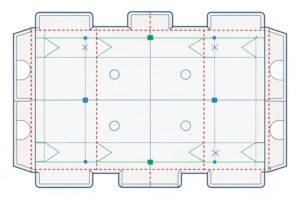Viele Käufer fühlen sich beim Wort „Versender“ unsicher. Mir ging es auch einmal so. Ich werde es jetzt klarer und nützlicher machen.
Ein Shipper im Merchandising ist eine vorverpackte, verkaufsfertige Displayeinheit, die mit Produkten im Inneren geliefert wird, sich schnell im Verkaufsraum aufstellen lässt und bei Produkteinführungen, Werbeaktionen oder saisonalen Aktionen Impulskäufe fördert.

Ich nutze vierteljährlich Spediteure für große Produkteinführungen in Nordamerika und Großbritannien. Ich lege Wert auf schnelles Setup, überzeugende Grafiken und saubere Verkaufszahlen. Ich erkläre die Kernideen und stelle meine Werksprüfungen zur Einhaltung der Termine vor.
Was ist eine Versenderausstellung?
Viele Teams verwechseln Versandkartons mit einfachen Kartons. Das habe ich in meinem ersten Jahr auch gemacht. Ein Versandkartondisplay verkauft direkt aus der Einheit, nicht aus dem Hinterzimmer.
Ein Shipper-Display ist eine vorgefüllte Boden- oder Paletteneinheit aus Karton, die sicher versendet werden kann, sich schnell öffnen lässt, das Produkt deutlich zeigt und mit aufgedrucktem Branding und Aufmachungen direkt aus derselben Struktur verkauft werden kann.

So funktioniert es
Ein Einzelhändler will Schnelligkeit und Ordnung. Die Mitarbeiter rollen eine Palette herein, schneiden ein paar Bänder zu, ziehen Kopfteile heraus und stellen die Einheit auf. Keine zusätzlichen Regale. Keine Suche nach Haken. In vielbeschäftigten Ketten wie Walmart oder Costco spart dies pro Filiale Minuten. Diese Zeit ist in kurzen Saisonfenstern entscheidend. Ich plane Sollbruchstellen, Aufreißstreifen und durchsichtige Aufmachungen ein, damit die Mitarbeiter nicht raten müssen. Wenn ich Käufer der Generation Z anspreche , drucke ich fette Schrift und einfache Werbeaussagen. In feuchten Regionen füge ich Beschichtungen oder Liner hinzu, damit die Kanten nicht aufquellen.
Was sollte enthalten sein?
Ich baue ein Schloss für Tabletts, einen stabilen Sockel und hohe Markenschilder ein. Vor Massenproduktionen führe ich Belastungstests und einen Falltest durch. Ich halte mich an die Größenvorschriften des Einzelhändlers und den Gangfluss. Ich führe einen Farbtest 2 , um Markenabweichungen unter Laden-LEDs zu vermeiden.
| Teil | Zweck | Mein Tipp |
|---|---|---|
| Kopfball | Erregen Sie Aufmerksamkeit aus einer Entfernung von 1,5 bis 3 Metern | Beschränken Sie den Text auf weniger als 8 Wörter |
| Tabletts | Gesichtsprodukt, Stop Slide | Fügen Sie einfache Nachfüllmarkierungen hinzu |
| Base | Gewicht tragen, Kippen widerstehen | Verwenden Sie für hohe Einheiten eine breitere Stellfläche |
| Aufreißstreifen | Schnelle Ladenöffnung | Drucken Sie die offenen Symbole neben den Schnittlinien |
Was ist ein Versender im Marketing?
Ich betrachte Spediteure als kleine Werbetafeln, die gleichzeitig Waren beherbergen. Sie machen Kampagnen vom ersten Tag an sichtbar. Sie sorgen dafür, dass Besucher in den Regalen aktiv werden.
Im Marketing ist ein Shipper eine kurzfristige, wirkungsvolle Platzierung, die Inventar, Botschaft und Standort bündelt, um die Konvertierung zu steigern. Er unterstützt Produkteinführungen, saisonale Storys und Cross-Selling mit schneller Einrichtung und messbaren Ergebnissen.

Kampagnenrolle
Ein Spediteur verknüpft die Geschichte mit dem Produkt. Der Text ist kurz. Die Vorteile sind klar und deutlich. Der Preis ist sichtbar. Ich platziere QR-Codes 3 für schnelle Informationen oder Garantie. Im Bereich Beauty fördere ich Farbfinder. Im Lebensmittelbereich zeige ich Serviervorschläge. Bei Jagdausrüstung hebe ich Zuggewicht, Sicherheitsverschlüsse und Garantie hervor. Ich wähle kräftige, kontrastreiche Grafiken, damit Käufer beim Gehen lesen können.
Wie ich messe
Ich vergleiche die pro Filiale und Woche verkauften Einheiten mit und ohne Spediteur. Ich achte auf die Nachfüllzeit und die Schadensquote. Ich überprüfe Rücksendungen auf Verpackungsverwechslungen. Wenn eine Überschrift Käufer verwirrt, kürze ich Wörter und verbreitere Symbole.
| Metrisch | Wie ich verfolge | Gutes Zeichen |
|---|---|---|
| Heben gegen Basislinie | POS pro Filiale pro Woche | +20–40 % in Woche 1 |
| Einrichtungszeit | Speichern Sie Feedback-Fotos und Zeitstempel | <10 Minuten |
| Schadensrate | QC-Protokolle, Rücksendungen | <1 % Einheiten |
| Einhaltung | Foto-Audits | 90 % der Geschäfte leben bis zum dritten Tag |
| Lesezeit des Käufers | Testvideos im Gang | 2–3 Sekunden bis zum Schlüsselanspruch |
Was ist Display -Waren?
Ich habe gelernt, dass es bei der Warenpräsentation nicht in erster Linie um die Ausstattung geht. Es geht darum, wie das Produkt aussieht und wie man schnell eine Auswahl treffen kann.
Unter Displayware versteht man Produkte, die so angeordnet sind, dass sie auf den ersten Blick verkauft werden können. Dazu gehören Planogrammregale, PDQ-Tabletts, Clipstreifen, Bodenständer und Palettendisplays, die Marke, Preis und Nutzen in einem klaren, einfachen Muster anzeigen.

Praktische Ansicht
Ich beginne mit dem Einkaufsweg. Bestseller platziere ich auf Griffhöhe, neue Artikel auf Augenhöhe und Bündel neben Preisschildern. Ich halte die Lücken klein, damit das Regal nie leer aussieht. Für Impulszonen 4 verwende ich kleine PDQ-Schalen in Kassennähe. Für sperrige Waren setze ich Palettenwagen an den Gangenden ein. Für Funktionen drucke ich einfache Symbole auf. Kleinen Text vermeide ich. Ich gestalte Kartons mit offenen Vorderseiten, damit Kunden Farbe und Größe schnell erkennen. In der Region Asien-Pazifik, wo das Wachstum schnell ist, halte ich die Formate flexibel, um Ladengrößen unterschiedlicher Größe gerecht zu werden.
Formate im Überblick
Ich wähle das Format nach Geschwindigkeit, Lagerbestand und Frachtplan aus. Mein Team legt Farbziele mit digitalen Proofs fest. Wir führen Transporttests durch, um ein Zerdrücken der Ecken zu verhindern.
| Format | Ziel | Wann zu verwenden |
|---|---|---|
| Planogrammregal5 | Laufende Verkäufe | Kernsortiment, stabile Nachfrage |
| PDQ -Tablett | Impuls | Kasse, Endkappen-Cross-Selling |
| Clipstreifen | Hinzufügen Auf | Kleine, leichte SKUs |
| Bodenständer | Sichtweite | Produkteinführungen, Markengeschichten |
| Palettenversender | Lautstärke + Geschwindigkeit | Lagerclubs, Promos |
Was ist ein Produktausstellungsjob?
Geschäfte brauchen Leute, die diese Setups einrichten und schützen. Ich habe das auf die harte Tour während eines überstürzten Urlaubs-Resets gelernt.
Bei einem Job im Bereich Produktdisplays geht es um den Aufbau, die Bestückung und die Wartung von Ladendisplays. Die Rolle verfolgt Planogramme, behebt Fehlbestände, dokumentiert die Platzierung und arbeitet mit Einkäufern, Ladenpersonal und Druckanbietern zusammen, um eine hohe Konvertierung zu gewährleisten.

Tägliche Arbeit
Die Person kommt früh. Sie prüft das Planogramm 6. Sie stellt Einheiten zusammen, platziert Überschriften und legt Preisstreifen fest. Sie stellt Produkte aus und beseitigt Schäden. Sie macht Beweisfotos. Sie schickt Notizen zu fehlenden Lagereinheiten. Sie fragt den Manager nach dem besten zulässigen Platz. Sie schult das Personal in schneller Lagerbestückung 7. Sie achtet auf die Sicherheit und verankert hohe Einheiten. Wenn mein Team eine Produkteinführung in den USA unterstützt, betreiben wir auch eine Hotline für Installateure. Wir genehmigen Live-Fotos, bevor das Geschäft öffnet. Wenn die Farbe nicht stimmt, schlagen wir für die nächste Welle neue Druckeinstellungen vor.
Fähigkeiten, die helfen
Einfache Werkzeuge, sorgfältige Hände und klare Notizen lösen die meisten Probleme. Gute soziale Kompetenz ermöglicht bessere Lösungen und schnellere Hilfe.
| Aufgabe | Zeitfokus | Auswirkungen |
|---|---|---|
| Bauen und verankern | 30–60 Minuten | Sicherheit, Stabilität |
| Schaft und Schlagfläche | Laufend | Konvertierung |
| Fotobeweis | 5–10 Minuten | Einhaltung |
| Fix-Outs | Tägliche Kontrolle | Umsatzerholung |
| Sprechen Sie mit Mitarbeitern | Nach Bedarf | Bessere Auffüllgewohnheiten |
Was ist Displayverpackungen?
Ich mag Verpackungen, die direkt aus der Packung verkauft werden. Das spart Arbeit und beschleunigt den Abverkauf. Außerdem reduziert es zusätzliches Zubehör.
Displayverpackungen sind Verpackungen, die beim Transport schützen und sich in Sekundenschnelle in ein Display verwandeln lassen. Sie lassen sich sauber öffnen, präsentieren das Produkt ordentlich und zeigen Marke und Preis ohne zusätzliche Teile.

Retail-Ready in der Praxis
Ich entwerfe SRP/PDQ-Verpackungen mit Perforationen, die sich schnell ablösen lassen. Ich setze „Hier öffnen“-Symbole. Ich wähle Kartonsorten, die den Transport überstehen. Bei strengen Vorschriften vermeide ich Plastikfenster. Ich wechsle zu wasserbasierten Tinten 8. Ich führe Belastungstests durch, da schwere Werkzeuge Tabletts verbiegen können. Für Armbrüste und Zubehör füge ich bei Bedarf Zurrgurte und Schaumstoff hinzu, lasse die Vorderseite aber offen. Ich passe die Schlägergrößen an Paletten im Costco-Stil an. Ich plane den Versand als Flachpaket 9 , um die Frachtkosten zu senken. Dies ist bei langen Strecken von Shenzhen in die USA und nach Kanada hilfreich.
Was macht es aus?
Klarheit schlägt Cleverness. Der Käufer benötigt schnell Größe, Funktion und Preis. Das Personal benötigt maximal fünf Schritte zum Öffnen und Platzieren. Meine Fabrik bietet kostenlose Anpassungen an Mustern an, bis sich der Ablauf richtig anfühlt.
| Besonderheit | Ergebnis | Beispiel |
|---|---|---|
| Perforierte Vorderseite | Schnell geöffnet | „Zip“-Aufreißstreifen |
| Integriertes Fach | Saubere Verkleidung | 4×3-Raster für SKUs |
| Fettgedruckte Paneele | Schnell lesen | Maximal 2–3 Ansprüche |
| Öko-Tinten | Sicherer Druck | Wasserbasiertes System |
| Flachpackung | Niedrigere Fracht | Mehr Einheiten pro Palette |
Was ist die Definition der Anzeigeverpackung?
Viele Teams verlangen eine formelle Linie, die sie in Spezifikationen oder RFQs einfügen können. Ich halte es einfach und streng.
Displayverpackungen sind verkaufsfertige Verpackungen, die Produkte beim Versand schützen und gleichzeitig als unmittelbares Point-of-Sale-Display fungieren. Sie verfügen über Schnellöffnungsfunktionen, korrekte Etiketten und klare Oberflächen, die eine sofortige Platzierung und einen sofortigen Verkauf ermöglichen.

Klare Definition und Umfang
Ich definiere Displayverpackungen 10 als „versandsicher und regalfertig“. Sie müssen Fall- und Drucktests bestehen. Sie dürfen sich ohne Messer in der Nähe der Produktoberflächen öffnen lassen. Marke, Preis und wichtige Werbeaussagen müssen darauf zu sehen sein. Sie müssen den Planogrammgrößen entsprechen. Sie sollten die Recyclingvorschriften des Zielmarktes erfüllen. In Nordamerika sind diese Vorschriften bereits ausgereift. In Europa sind die Nachhaltigkeitsprüfungen streng. In der Region Asien-Pazifik wächst das Produkt schnell, daher entwerfe ich flexible Größen. Ich vermeide tiefe Schalen, die Artikel verbergen. Ich bevorzuge stabile Schalen mit Nachfüllmarkierungen. Ich halte den Text kurz, da Käufer ihn nur überfliegen.
Gemeinsame Synonyme
Teams verwenden in verschiedenen Regionen unterschiedliche Wörter. Die Tabelle hilft dabei, eine gemeinsame Sprache in Briefings festzulegen.
| Begriff | Region / Verwendung | Notizen |
|---|---|---|
| SRP (Regalfertige Verpackung) | Europa | Fokus auf Regalpassung und Geschwindigkeit |
| UVP (Verkaufsfertige Verpackung) | Großbritannien/AU | Oft dasselbe wie SRP |
| PDQ (verdammt schnell) | Nordamerika | Kleine Theken- oder Regaltabletts |
| Display-Packung | Allgemein | Allgemeiner Ausdruck |
| Versenderanzeige | Nordamerika | Vorgefüllte Boden-/Paletteneinheit |
Abschluss
Ein Spediteur funktioniert, wenn das Design einfach ist, die Einrichtung schnell geht und der Lagerbestand bereit ist. Klare Darstellungen sind entscheidend. Eine solide Struktur ist entscheidend. Gute Fotos beweisen die Einhaltung der Vorschriften. Der Umsatz folgt.
Das Verständnis der Vorlieben der Generation Z kann Einzelhändlern dabei helfen, ihre Marketingbemühungen effektiv anzupassen. ↩
Durch das Erlernen von Farbproofs können Sie Ihr Verpackungsdesign verbessern und die Markenkonsistenz sicherstellen. ↩
Entdecken Sie, wie QR-Codes die Kundenbindung verbessern und schnellen Zugriff auf Produktinformationen ermöglichen können. ↩
Unter diesem Link erfahren Sie, wie Sie den Umsatz in Impulszonen maximieren und die Kundenbindung verbessern können. ↩
Diese Ressource bietet Einblicke in die Gestaltung von Planogrammregalen, die den laufenden Umsatz steigern und die Produktplatzierung optimieren. ↩
Das Verständnis von Planogrammen kann Ihre Einzelhandelsstrategie verbessern und die Effizienz der Produktplatzierung verbessern. ↩
Durch die Erforschung schneller Nachschubmethoden können Sie die Effizienz und den Umsatz Ihres Geschäfts erheblich steigern. ↩
Entdecken Sie die Vorteile wasserbasierter Tinten für umweltfreundliche Verpackungslösungen und deren Auswirkungen auf Sicherheit und Qualität. ↩
Erfahren Sie, wie der Versand von Flachpackungen die Logistik optimieren und die Transportkosten erheblich senken kann. ↩
Das Verständnis von Displayverpackungen ist für eine effektive Produktpräsentation und einen effektiven Verkauf von entscheidender Bedeutung. ↩





